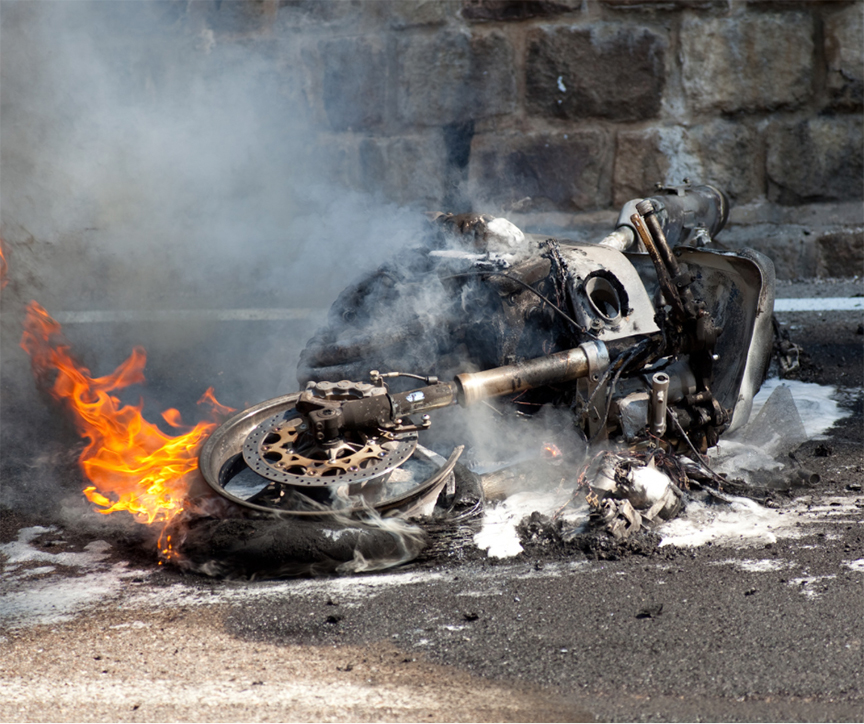
By David Peel
Motorcycles have always held a unique appeal, offering a thrilling and exhilarating mode of transportation with the wind in your hair.
But motorcycle riding comes with significantly increased risks of death and serious injury compared to automobiles.
1. Fatality Rates:
According to the NHTSA, the fatality rate for motorcycles is alarmingly higher than that of automobiles. In 2019, motorcyclists were approximately 29 times more likely to die in a road accident per mile traveled compared to passenger car occupants.
This disparity is largely attributed to the vulnerability of motorcyclists, who lack the protective structure and safety features offered by cars.
2. Lack of
Crashworthiness:
Unlike automobiles, motorcycles do not possess the crashworthiness features such as seat belts, airbags, or an enclosed structure that shields occupants from external impacts. Consequently, motorcyclists are at a greater risk of severe injuries in accidents.
The NHTSA reported that motorcyclists were nearly 5 times more likely to be injured in crashes per mile traveled than passenger car occupants in 2019.
3. Increased
Exposure:
Motorcycles offer minimal protection against collisions with other vehicles, obstacles, or road hazards. Additionally, due to their smaller size, motorcycles are often less visible to other drivers, increasing the likelihood of accidents.
The NHTSA revealed that in 2019, approximately 47% of fatal motorcycle crashes involved collisions with other motor vehicles, with the majority being caused by a failure to detect motorcycles in traffic.
4. Speeding:
Speeding, easy to do on a bike, is a significant contributor to motorcycle accidents. According to the NHTSA, in 2019, 33% of all motorcycle riders involved in fatal crashes were speeding, compared to 18% of passenger car drivers.
5.Impaired riding: riding and drinking don’t mix. Almost 26% of fatally injured motorcyclists had a blood alcohol concentration (BAC) at or above the legal limit.
Conclusion:
While motorcycle riding can provide a sense of freedom and adventure, it is important to recognize the heightened risks associated with this mode of transportation. Most of these dangers come from interaction with automobiles. Motorcycle riders face a staggeringly higher risks of death and serious injury compared to automobile occupants.
To mitigate these risks, motorcyclists should prioritize safety by avoiding traffic whenever they can.
Additionally, wearing proper protective gear, and remaining defensive and vigilant on the road are required. Additional lighting, such as additional strobing lights, increase visibility.
Likewise, it is crucial for other automotive motorists to be aware of motorcyclists and exercise caution when sharing the road. Look left, right and left again before pulling out.
In some studies and reports, it has been observed that individuals who died in motorcycle accidents have a higher likelihood of becoming organ donors. This is partly due to the demographics of motorcycle riders, who tend to be younger and healthier on average compared to individuals who die from other causes. Younger and healthier individuals generally have a higher chance of being suitable organ donors.
If you ride a bike on the public roads, please make sure your family knows your final wishes.
Peel seeks justice for those injured in tractor trailer and car accidents, medical malpractice, and disability. He often addresses churches, clubs and groups without charge. Peel may be reached through PeelLawFirm.com wherein other articles may be accessed.



